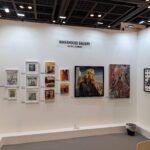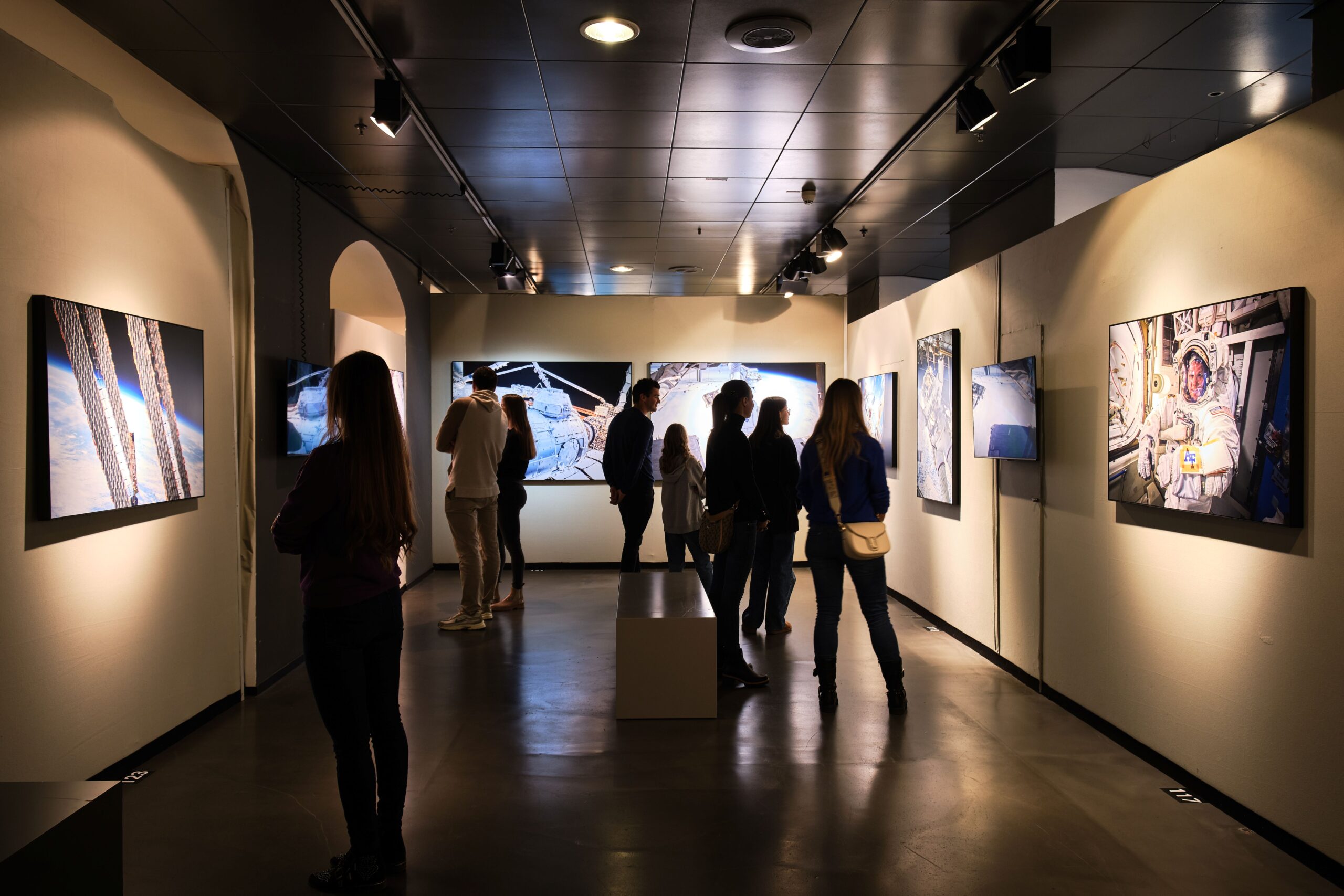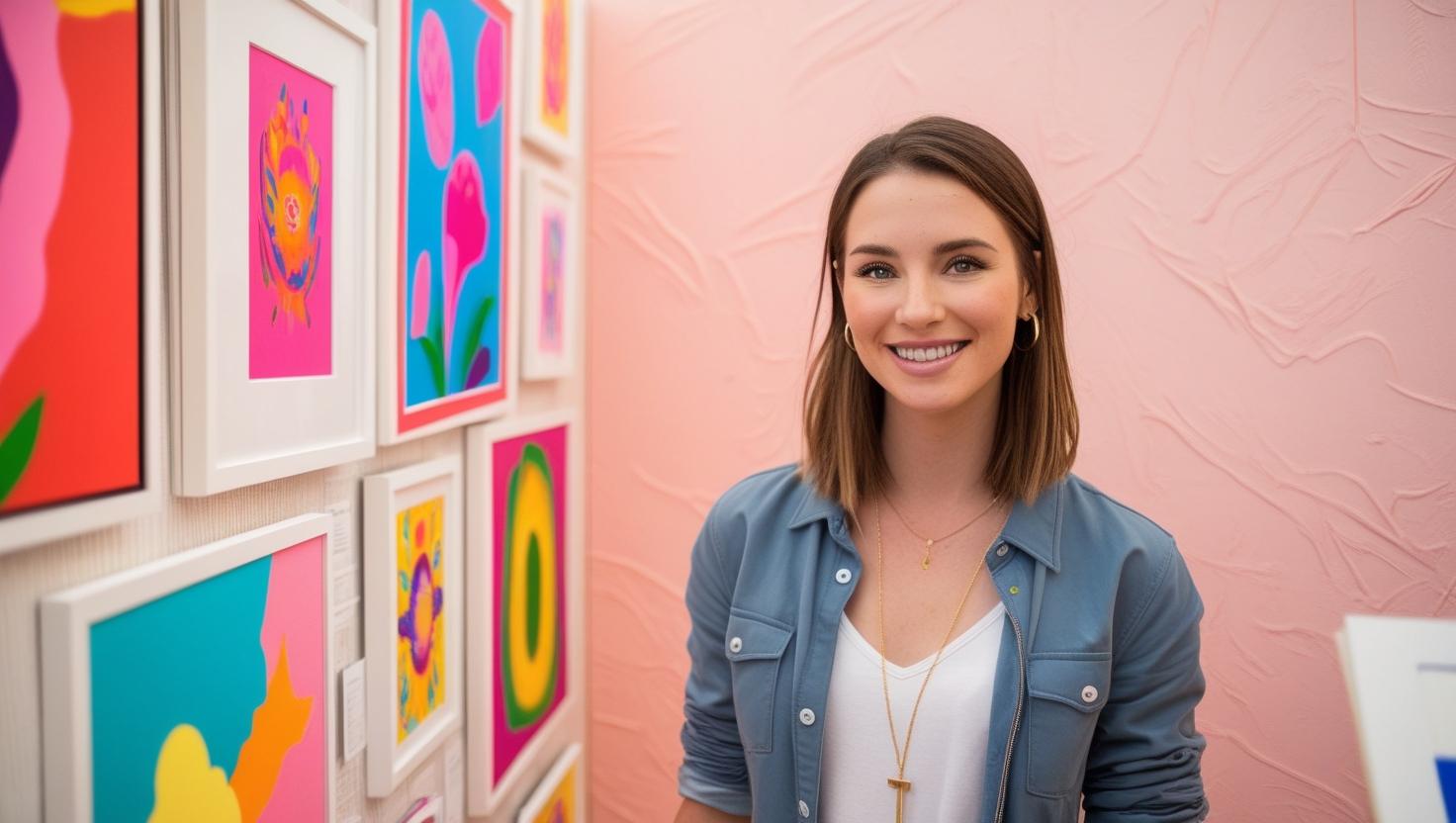From setting up your works, to offering information for visitors, to selling your works and wrapping them after a sale or when the fair is over – this packing list helps you prepare for all possible scenarios at your next art fair.
Participating in an art fair is an exciting opportunity for artists, whether you’re a first-time exhibitor or a seasoned pro. However, ensuring you have everything you need can be overwhelming. To help you stay organized and stress-free, we’ve compiled a comprehensive packing guide for your next (or first) art fair. If you are not yet sure which art fair suits your work, check out our guide to choosing the right art fairs for your work.
1. Your Artwork
It might seem obvious, but the first and most important thing on your list is your art. Here’s how to ensure your pieces arrive safe and are ready for display:
- Artworks (framed or unframed): Double-check your inventory and ensure all pieces are appropriately labeled.
- Protective packaging: Wrap your artworks in bubble wrap or foam sheets and use sturdy boxes or crates for transportation. Invest in corner protectors for framed pieces – its worth it, cause frames chip if not handled with care. After wrapping the works, add a piece of tape on the center, easily visible and write the title of the work on the tape. Thank me later! Because when you are rewrapping your works after the fair is over, or when you are in a rush to find the right sized bubble wrap for a work you just sold, it will be quick and easy to allocate with the label on the front.
- Extra artwork: Bring a few additional smaller pieces or prints, especially if you sell well during the fair.
- Prepare your artworks for an art fair: Check out our comprehensive guide on how to prepare your artworks for an art fair.
2. Display Essentials
Creating a captivating display can make all the difference in drawing people to your booth. Before packing – make sure you check the Art Fair Guidelines! Here’s what you’ll need to set up a professional and inviting exhibition space / exhibition booth:
- Easels and stands: Not all art fairs provide these, so it’s best to bring your own. Some fairs also ban easels and stands – check the guidelines first.
- Transport cart: Often the parking opportunities during set up (and decomissioning) are not directly in front of the fair. Bring a small transport cart or buggy which will help you carry all your works and supplies in just one or two runs, instead of 10. You can always store this in the car after setting everything up.
- Hanging supplies: Hooks, nails, screws and wire for hanging art on walls. Screwdrivers, drills, hammer, measuring tape, spirit lever and a pencil should also be in your hanging supplies bag. Check the guidelines first to see which screw/nail sizes are allowed. Often the max width of screws is 4mm. During the art fair, keep some extra scres/nails and a drill or hammer readily available – if you sell a work, you want to be able to quickly hang a new one.
- Lighting: Check the guidelines of the art fair here as well – usually art fairs provide ample lighting and you can order extra lighting in advance. In case the fair does not provide enough lighting, bring battery-powered spotlights or small lamps to ensure your art is well-lit, especially if the venue’s lighting isn’t ideal.
- Chair(s) & Table: Check with the fair if they are providing you with a table and chairs. If not – bring your own! Standing for 4 days will make you tired and exhausted – you need to be able to sit and rest inbetween customer interactions. It’s also nice to have two chairs and offer (potential) customers a chacne to sit and enjoy your works.
- Table covers: If you have a table, bring a clean, neutral-colored cover that complements your artwork.
- Hanging Artworks: To learn how to properly hang artworks at art fairs, check out our comprehensive guide here.
3. Promotional Materials
Engage visitors by giving them something to remember you by. Having promotional materials on hand can lead to future sales and commissions:
- Business cards: Include your contact details, website, and social media handles.
- Artwork Labels: Read our guide on how to properly label artworks here.
- Artist bio and statement: Print out several copies of your bio and artist statement for interested buyers to take home.
- Price lists: Make it easy for potential buyers to know how much each piece costs – transparency is key. Have both a visible price list and a smaller one to hand out on request or a digital version to send via email.
- Flyers or postcards: These can showcase your portfolio, upcoming exhibitions, or offer a discount code for future purchases.
- Digital tools: Go Paperless and offer digital tools like scan.art which offers visitors direct digital access to your artist profile and artwork information.
4. Sales Tools
Be ready to handle transactions smoothly. A well-prepared artist is always ready to sell:
- Payment system: Ensure you have a mobile point-of-sale (POS) system like Square, SumUp, PayPal Here, or a similar app for processing card payments. Sometimes art fairs also offer a card reader for artists to borrow – check with the fair.
- Receipt book / access to billing software: In case a customer requests a paper receipt, have a receipt book on hand. Alternatively, bring your laptop or tablet and make sure you have itnernet access so that you can write receipts and bills directly through your billing software.
- Cash float: Bring enough cash for change, and don’t forget a secure cash box if you are accepting and expecting cash payments.
- Notepad and pen: For quick notes, sale records, or potential customer information.
5. Packing and Shipping Supplies
Once your artwork is sold, you’ll need to pack it carefully to ensure it reaches its new home safely. It’s also essential to have materials for packing your unsold pieces when the fair ends:
- Bubble wrap, tissue paper, or foam sheets: Protect your artworks during and after the fair.
- Boxes or tubes for prints: Keep smaller works and prints safe in appropriate containers.
- Tape and scissors: For securing your packaging. Bring ample tape – better too much. You can’t wrap a work without tape..
- Artist labels: Include information like your name, the title of the work, medium, and care instructions.
6. Comfort and Personal Essentials
Art fairs can be long and exhausting. Keep yourself comfortable so you can focus on engaging with visitors and selling your work:
- Comfortable shoes: You’ll be on your feet for hours, so choose footwear that supports you all day.
- Water and snacks: Stay hydrated and energized without having to leave your booth.
- Notebook or tablet: Take down any ideas, comments from visitors, or contacts you meet.
- Phone charger or power bank: Ensure your phone stays charged throughout the event for transactions and communication. Some art fairs offer electricity outlets at every booth, others charge you extra and others don’t offer them at all. Check the art fair guidelines!
7. Tools and Extras
Expect the unexpected. Whether it’s a last-minute fix or adjusting your display, having the right tools can save you time and stress:
- Multitool or Swiss Army knife: Handy for tightening screws, cutting wires, or opening packages.
- Tape measure: For making sure your pieces are hung evenly and spaced correctly.
- Duct tape and zip ties: Perfect for quick fixes or securing loose materials.
8. Post-Fair Follow-up Essentials
After the fair, you’ll want to stay connected with any potential buyers or art lovers who showed interest in your work:
- Email sign-up sheet: Collect email addresses for your newsletter or future events.
- Thank you notes: A personal touch that can go a long way in building relationships with collectors.
Attending an art fair is both exhilarating and challenging, but with the right preparation, you can focus on enjoying the experience and showcasing your art. Use this packing checklist as a guide to help you feel organized and confident at your next (or first) art fair.
Remember, your goal is not only to sell your art but also to make meaningful connections with collectors, gallery owners, and other artists.
Good luck and happy exhibiting!









